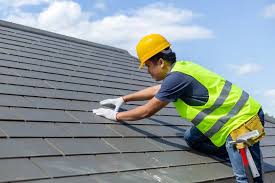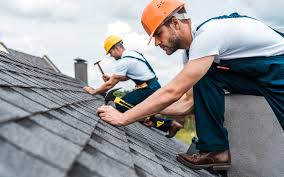Selecting the right roofing material for your home is a critical decision that impacts not only the aesthetic appeal of your property but also its long-term durability and energy efficiency. With so many options available, homeowners can sometimes feel overwhelmed by the choices. The right roofing material should match your home’s architectural style, local climate, and your long-term goals for maintenance and cost.
In this article, we’ll break down the most popular roofing materials, their benefits, and how to choose the best one for your home. Understanding the different materials and their strengths will help you make an informed decision, ensuring your roof installation is built to last and suits your needs.
1. Asphalt Shingles: The Popular Choice
Asphalt shingles are by far the most common roofing material in the United States, particularly for residential homes. Known for their affordability, ease of installation, and durability, asphalt shingles are a reliable choice for many homeowners.
a. Benefits of Asphalt Shingles
One of the biggest advantages of asphalt shingles is their cost-effectiveness. They are typically less expensive than other roofing materials, making them an attractive option for homeowners on a budget. Despite their lower price point, asphalt shingles offer good durability, with many brands providing warranties of up to 20-30 years.
Additionally, asphalt shingles come in a variety of colors and styles, making them adaptable to different home designs. This versatility allows homeowners to customize the look of their roof without sacrificing quality or breaking the bank.
b. Durability and Maintenance
While asphalt shingles are generally durable, they can be prone to damage from extreme weather conditions, such as high winds, hail, and heavy rain. However, they are relatively easy to repair, and individual shingles can be replaced without needing to redo the entire roof.
Homeowners who opt for asphalt shingle roof installation should consider regular maintenance and inspections to ensure the longevity of the roof. With proper care, asphalt shingles can provide reliable protection for your home for many years.
2. Metal Roofing: Long-Lasting and Energy-Efficient
For homeowners looking for a more durable and energy-efficient option, metal roofing is an excellent choice. Metal roofs have gained popularity in recent years due to their longevity, low maintenance requirements, and eco-friendly benefits.
a. The Durability of Metal Roofs
One of the standout features of metal roofing is its longevity. Metal roofs can last 40-70 years, depending on the material and the level of maintenance they receive. This is significantly longer than asphalt shingles, making metal roofing a long-term investment for homeowners.
Metal roofing is highly resistant to weather-related damage, including high winds, heavy rain, and even fire. This durability makes it an ideal choice for homeowners in regions with extreme weather conditions.
b. Energy Efficiency and Sustainability
Another key benefit of metal roofing is its energy efficiency. Metal roofs reflect solar heat, reducing the amount of heat absorbed by your home. This can help lower cooling costs during the summer months, making your home more energy-efficient. Additionally, many metal roofing materials are made from recycled materials and can be recycled at the end of their lifespan, contributing to a more sustainable roofing solution.
While metal roofs tend to have a higher upfront cost than asphalt shingles, the long-term savings on energy bills and maintenance make them a wise investment.
3. Clay and Concrete Tiles: Durability with Unique Style
For homeowners looking for a distinctive aesthetic, clay and concrete tiles offer a unique and attractive roofing option. Often seen on Mediterranean or Spanish-style homes, these tiles provide a timeless look and are known for their durability.
a. The Strength of Tile Roofing
Both clay and concrete tiles are extremely durable and can last over 50 years with proper maintenance. They are highly resistant to weather damage, including heavy rains and high winds, and are fireproof, providing additional protection for your home.
In terms of maintenance, tile roofs require minimal upkeep. However, they can be more fragile than other roofing materials, meaning they may crack or break if walked on. It’s important to hire a roofing professional for any repairs or inspections to avoid causing damage to the tiles.
b. Architectural Appeal
Clay and concrete tiles are well-suited for homes with Mediterranean, Spanish, or Southwestern architecture. They add a unique visual element to the roof, enhancing the overall aesthetic appeal of the home. While they are more expensive than other materials, the combination of durability and beauty makes tile roofing a popular choice for many homeowners.
4. Slate Roofing: Premium Durability and Elegance
Slate roofing is one of the most premium roofing materials available, known for its unmatched durability and timeless appearance. Made from natural stone, slate roofs can last well over 100 years, making them an investment in both durability and style.
a. Benefits of Slate Roofing
Slate is a natural, eco-friendly material that provides unparalleled longevity. Unlike other roofing materials that may need replacing every 20-30 years, a slate roof can last a lifetime, and many homes with slate roofs have had them for over a century.
In addition to its durability, slate roofing is also fire-resistant and highly resistant to weather damage. It can withstand harsh conditions, including heavy snow and ice, making it an excellent choice for homeowners in colder climates.
b. Aesthetics and Value
The aesthetic appeal of slate roofing is undeniable. Its natural stone appearance adds elegance and sophistication to any home, enhancing curb appeal and increasing property value. Slate is available in a variety of colors, allowing homeowners to customize the look of their roof to suit their architectural style.
However, due to the material’s weight and high cost, slate roof installation should be carried out by experienced professionals like Best Choice Roofing of East Detroit to ensure that the structure of the home can support the weight of the slate.
5. Synthetic Roofing Materials: Innovation in Durability
For homeowners looking for the aesthetic appeal of natural materials like slate or wood without the high cost or maintenance, synthetic roofing materials are an innovative and practical option. These materials are designed to mimic the appearance of traditional roofing materials while offering enhanced durability and lower maintenance requirements.
a. Benefits of Synthetic Roofing
Synthetic roofing materials, such as synthetic slate or composite shingles, are made from a combination of plastic and rubber. They offer the same aesthetic appeal as their natural counterparts but with improved durability and resistance to damage. Unlike natural slate or wood, synthetic materials are lighter in weight, making them easier to install and less likely to cause structural issues.
Additionally, synthetic roofing materials are often more affordable than natural materials, providing homeowners with a cost-effective alternative that still offers long-lasting performance.
b. Eco-Friendly and Low Maintenance
Many synthetic roofing materials are made from recycled materials, making them an eco-friendly choice for environmentally conscious homeowners. They are also highly resistant to mold, algae, and UV damage, requiring less maintenance than natural materials like wood or slate.
With a lifespan of 30-50 years, synthetic roofing provides a durable and attractive roofing solution for homeowners who want the look of natural materials without the associated costs or upkeep.
6. Factors to Consider When Choosing a Roofing Material
With so many roofing materials to choose from, it’s important to consider several factors before making a decision. Each home is different, and what works for one property may not be suitable for another.
a. Climate and Weather Conditions
The climate and weather conditions in your area play a significant role in determining the best roofing material for your home. For example, homes in areas with frequent heavy rainfall or snow may benefit from metal or slate roofing, which offers excellent resistance to water damage and extreme weather. In contrast, homeowners in warmer regions may prefer energy-efficient options like metal or tile, which reflect heat and help reduce cooling costs.
b. Budget and Long-Term Costs
Your budget is another important factor to consider. While some roofing materials, like asphalt shingles, are more affordable upfront, others, like metal or slate, offer longer lifespans and lower long-term maintenance costs. It’s important to balance your initial investment with the expected longevity and maintenance requirements of the material.
c. Aesthetic Appeal
Lastly, the aesthetic appeal of the roofing material should complement the architectural style of your home. Whether you prefer the sleek look of metal, the traditional appearance of shingles, or the distinctive charm of tile, choosing a material that enhances your home’s curb appeal is key to making a smart investment.
Conclusion
Choosing the right roofing material for your home is a decision that will impact its durability, energy efficiency, and appearance for years to come. Whether you opt for the affordability of asphalt shingles, the longevity of metal, or the elegance of slate, understanding the benefits and drawbacks of each material is crucial to making the best choice.
For homeowners in Detroit, Best Choice Roofing of East Detroit offers expert advice and installation services to help you select the perfect roofing material for your home. With the right materials and professional installation, your roof will provide lasting protection, enhance your home’s value, and offer peace of mind for decades to come.



